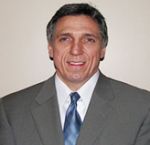(This is fourth in a four-part series dealing with the juvenile justice system.)
In 2008, the disparity between Black and White juvenile offenders in Allegheny County rose to its highest peak in the past five years. Commonly referred to as the backbone of juvenile court, probation officers are tasked with the responsibility of ensuring these offenders repay their debt to society and go on to lead productive lives.
 |
|
RUSSELL CARLINO
|
“We’re always trying to keep the community safe and hold kids accountable. The big challenge in addition to that is developing competencies for youth,” said Russell Carlino, the county’s director of juvenile probation. “We’re doing more assessments regarding the juvenile’s risks and needs so we really try to determine them so we can address that appropriately.”
In keeping with the mission of the county’s overall juvenile justice system, offenders are expected to complete community service hours and pay restitution to the victim with the goal of healing the community. While monitoring this activity, probation officers also work to rehabilitate the perpetrator.
“The part that’s really unique to the individual is programming whether it’s education or anger management, school work or some kind of professional training track, we like to have kids on one of those, in addition to any mental health treatment,” Carlino said. “The short-term goal is to provide education opportunities, so the kid can become a law-abiding taxpaying citizen. It’s not enough to be drug free or substance abuse free, that’s a good thing, but we expect more, we expect them to be moving in a positive direction.”
 |
| JAMIE HURST
|
According to the county’s most recent report compiled in 2008, the number of children who pay restitution in full is generally around 80 percent and about 96 percent complete all of their community service hours. Between ten and 15 percent of those on probation are arrested while under supervision.
“We do a report card every year. We look at recidivism, the kids arrest rates,” Carlino said. “The community service is big part of what’s required. We look at the amount of restitution. We really place a high emphasis on getting that money back to the victim to make them whole again.”
The Community Intensive Supervision Program is a type of probation program with centers in Garfield, the Hill District, Homewood, McKeesport and Wilkinsburg. All youth placed with CISP are supervised, monitored and held accountable twenty-four hours a day. The youth are required to report to their assigned center after school and on weekends.
“That was designed 20 years ago to address the disproportionate amount of youth being placed out of their homes. The youth come to the place after school and during the high crime times,” said Probation Officer Jamie Hurst “If we do have to place them out of the homes it’s usually short term.”
In her 10 years as a probation officer, Hurst has learned a lot about youth behavior and what can be done to prevent them from falling into the cycle of crime and punishment.
“One thing I love about the youth is they can appreciate structure as long as it’s consistent,” Hurst said. “A lot of people say they’re just rebellious they don’t want to listen. That’s not true; they just need something consistent.”
Hurst said parents play a critical role in the rehabilitation of children and their lack of involvement can often times hinder progress from being made.
“At times you can become frustrated with families who don’t really understand the process. They just want you to fix the problem they don’t necessarily want to be involved in it,” Hurst said. “Sometimes you run across families who are so tired of dealing with it that they just want you to fix it. They need to look at us more as an ally and to understand that their fight is with the street not us.”
In light of the consistent numbers of juvenile offenders, Hurst said she would like the county to focus their efforts on prevention methods in order to keep children from ever entering the juvenile justice system.
“One of the things we’re sometimes faced with are parents who’d want their younger children to experience some prevention, a scared straight type of thing and we’re not really able to do that,” Hurst said. “Maybe if there was some kind of prevention program to help youth earlier on,that would help the parents.”